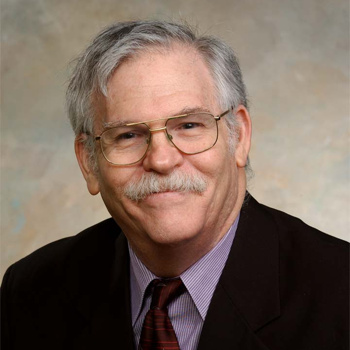HAL5 and USSRC Joint Pass the Torch Event
June 1, 2017 at 5:30 pm at USSRC Davidson Center's National Geographic Theater
Dr. Martin C. Weisskopf, NASA/MSFC Chief Scientist for X-Ray Astronomy on
"The Imaging X-Ray Polarimetry Explorer: An Overview of the Mission and its Science"

The Imaging X-ray Explorer (IXPE) will be the next in the line of NASA’s
Small Explorer Missions. The mission allows, for the first time imaging
X-ray polarimetry with sufficient sensitivity to study approximately 50
X-ray sources per year of observing. The most unique feature of this
mission provides image-resolved polarization measurements for a
significant number of extended objects such as supernova remnants and
pulsar wind nebulae. The imaging capability will also be exploited to
accomplish a unique study of our galactic center to understand if
Sagittarius A* [SGR-A* black hole]
substantially more active several hundred years ago. The sensitivity
also allows one to perform the first polarization map of the bright
active galaxy Centaurus A (Cen-A).
The mission involves a partnership with the Italian Space Agency and
NASA and involves several institutions in Italy with the Italian
partners providing the polarization-sensitive X-ray detectors and the
use of the ground station at Malindi. The IAPS/INAF at Rome and INFN in
Pisa and Turin will lead the detector development. Ball Aerospace, in
Boulder Colorado, will build the spacecraft and perform systems
integration. NASA’s Marshall Space Flight Center leads the program and
will supply the X-ray Telescopes, use its facilities to perform
end-to-end X-ray calibration and provide the Science Operations Center.
Mission operations will be conducted at the Laboratory for Atmospheric
Physics (LASP), also in Boulder Colorado.
We will review the history of astronomical measurements of the linear
polarization of X-ray sources discussing the various technologies and
then explain the breakthrough that the IXPE detectors provides making
the mission feasible. Following a description of the mission hardware
and how IXPE works we will discuss a number of unique and exciting
experiments that IXPE will perform.
Stay after the talk to enjoy USSRC's Biergarden. Enjoy the festive atmosphere with imported and domestic beers and delicious wines from the German region. It’s family-friendly. Admission is free, and food and beverages are available for purchase.
About Dr. Martin C. Weisskopf

Martin C. Weisskopf received his B.A. in Physics from Oberlin College,
and his PhD in Physics from Brandeis University. He began his career as
an Assistant Professor at Columbia University, and left Columbia to
become senior X-ray astronomer at Marshall Center and Chandra X-ray
Observatory project scientist. He is project scientist for NASA's
Chandra X-ray Observatory and Chief Scientist for X-ray Astronomy in the
Space Sciences Department at NASA's Marshall Space Flight Center.
With the passing of Dr. Robert Novick, Dr.
Weisskopf is now the world’s leading expert on experimental techniques
for X-ray polarization measurements of astronomical objects. While at
Columbia University, he performed numerous experiments: The most
relevant to this proposal was his involvement in the conception, design,
construction, calibration, and flight of the sounding rocket experiment
that first detected X-ray polarization from an astronomical object—the
Crab Nebula. As important, he was a designer, Co- Investigator, and the
Project Scientist (1975–1977) of the X-ray polarimeter on the OSO-8
satellite, the only satellite experiment specifically designed for such
observations. His team was the first to develop and publish an
electron-tracking polarimeter. He was a Senior Co- Investigator on the
Stellar X-Ray Polarimeter experiment and, together with Dr. Ronald
Elsner, led the scientific design of that experiment. More recently
(2014) he led an international team to obtain the highest precision
measurements of the Crab Pulsar’s polarization at 1.4 GHz.
Dr. Weisskopf serves as the Chandra X-ray Observatory Project Scientist
a position he has held since 1977. In this position he is responsible
for the scientific integrity of one of NASA’s Great Observatories within
programmatic constraints. The Observatory is in its 15th year of
operation, having been designed for three years with a goal of five.
Moreover the Observatory is one of the crown jewels of NASA’s scientific
missions, consistently rating near the top of its many NASA Senior
Reviews and having a publication and scientific impact record on a par
with NASA’s Hubble Space Telescope. Chandra’s unparalleled success is in
no small part due to the leadership and technical insight of Dr.
Weisskopf, the Project Science Team at MSFC, and, of course, their
partners at the Smithsonian Astrophysical Observatory.
Dr. Weisskopf is the recipient of numerous awards including NASA Medals
for Exceptional Service and Scientific Achievement, and a Presidential
Rank Award. He is an elected Fellow of the American Physical Society,
which, amongst other things, cited his pioneering work in X-ray
polarimetry. He is also an elected Fellow of the International Society
for Optical Engineering (SPIE), which recognized his technical expertise
in the area of X-ray instrumentation for astronomical observations. He
is also a winner of the Rossi Prize of the High Energy Astrophysics
Division of the American Astronomical Society, which recognized his
contributions to the success of the Chandra X-Ray Observatory.
Dr. Weisskopf has authored or co-authored 330 papers in refereed
journals, books, and conference proceedings. Of particular relevance are
38 publications on many aspects of X-ray polarimeters, X-ray (and radio)
polarimetry, 22 publications on various aspects of proportional
counters.

